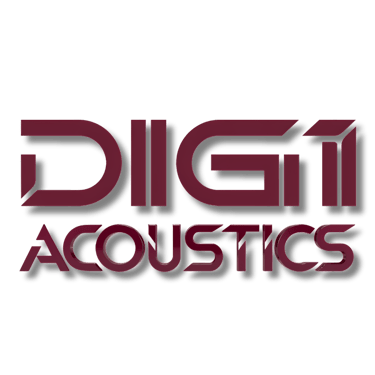Meeting Room Soundproofing: The Complete Guide to Acoustic Privacy
DIGI Acoustics


1. Why Soundproofing a Meeting Room is Crucial
Imagine you're in the middle of a confidential meeting, and voices from the next room keep bleeding in — or worse, your private conversation can be heard outside the room. That’s not just distracting; it’s a security and productivity issue.
Key reasons why meeting room soundproofing is essential:
Confidentiality: Prevents sensitive information from leaking out.
Focus & Productivity: Reduces distractions from external noises.
Professionalism: Impresses clients with a quiet, controlled environment.
Compliance: In some sectors, it’s mandatory to maintain data and communication privacy.
2. Understanding the Types of Noise in Meeting Rooms
Before applying a solution, you must understand the types of noise that affect meeting rooms:
Airborne Noise: Voices, phone ringtones, or HVAC systems.
Impact Noise: Footsteps from the floor above or door slams.
Structure-Borne Noise: Vibrations transmitted through building materials.
Reverberation & Echoes: Sound waves bouncing within the room, reducing clarity.
Identifying the type of noise you’re facing will help tailor the soundproofing solution effectively.
3. Soundproofing vs. Sound Absorption: Know the Difference
Soundproofing and sound absorption are often used interchangeably, but they serve different purposes:
Soundproofing: Blocks sound from entering or exiting the room.
Sound Absorption: Improves internal sound quality by reducing echoes and reverberations.
An effective meeting room acoustic plan must include both techniques to achieve optimum results.
4. Materials That Help Soundproof Meeting Rooms
To soundproof a meeting room effectively, you’ll need a combination of mass, damping, decoupling, and absorption. Let’s look at the best materials:
Mass Loaded Vinyl (MLV): Adds mass and blocks sound transmission.
Acoustic Panels: Absorb internal sound and reduce echo.
Mineral Wool or Fiberglass Insulation: Ideal for interior walls and ceilings.
Soundproof Drywall (e.g., QuietRock): Offers high STC (Sound Transmission Class) ratings.
Weather Stripping & Door Sweeps: Seal gaps around doors.
Double Glazed Windows: Reduces sound passing through glass.
Each material has its own role in a layered soundproofing strategy.
5. Soundproofing the Walls
Walls are the first line of defense in meeting room soundproofing.
Solutions:
Add acoustic insulation inside wall cavities (rock wool or fiberglass).
Install double layers of drywall using soundproof adhesive (Green Glue).
Consider building staggered stud or double stud walls to decouple sound vibrations.
Use decorative acoustic panels or fabric-wrapped panels to enhance aesthetics and performance.
Pro Tip: Avoid shared HVAC ducts between rooms as they transmit sound easily.
6. Soundproofing the Doors
Standard doors are often weak links in soundproofing. A hollow-core wooden door can ruin even the best soundproofed wall.
Solutions:
Replace hollow-core doors with solid-core doors.
Add acoustic door seals around all four edges.
Install automatic door bottoms to seal the gap underneath.
Apply mass-loaded vinyl or acoustic panels directly on the door.
A properly sealed door can significantly boost STC levels in your meeting space.
7. Ceiling and Floor Soundproofing
Sound doesn’t just travel horizontally — it moves up and down through ceilings and floors too.
For Ceilings:
Use acoustic ceiling tiles or suspended acoustic clouds.
Add resilient channels and soundproof insulation above the ceiling grid.
Consider a floating ceiling design to decouple vibrations.
For Floors:
Install acoustic underlays beneath carpets or tiles.
Use carpet tiles or area rugs to reduce impact noise.
In high-end settings, opt for floating floors with sound isolation membranes.
This comprehensive approach ensures your meeting room is protected from overhead chatter or footsteps.
8. Managing Internal Acoustics
Even if you block all external noise, your room can still sound echoey or muddled. Internal acoustics are just as important.
Internal Acoustic Treatments:
Wall-Mounted Acoustic Panels: Reduce reverberation and flutter echo.
Ceiling Clouds or Baffles: Ideal for high ceilings and open spaces.
Bass Traps: If the room is large, these help absorb low frequencies.
Furniture and Decor: Upholstered chairs, bookshelves, and fabric curtains can absorb sound passively.
A room with balanced acoustics enhances speech intelligibility, perfect for video calls or presentations.
9. Acoustic Ratings You Should Know
Understanding some key soundproofing terms can help you measure your success:
STC (Sound Transmission Class): Rates how well a material blocks sound. Aim for 45+ for meeting rooms.
NRC (Noise Reduction Coefficient): Rates how well materials absorb sound. Higher NRC = better internal acoustics.
IIC (Impact Insulation Class): Measures impact noise reduction through floors.
Always ask your acoustics contractor or supplier for these values when selecting materials.
10. Advanced Technologies for Modern Meeting Rooms
Today’s smart offices use technology-driven acoustic solutions for precision and automation.
Examples:
Active Noise Control (ANC): Devices that cancel unwanted sounds using opposing sound waves.
Digital Sound Masking Systems: Emit low-level background noise to enhance speech privacy.
Smart Acoustic Sensors: Monitor noise levels and adjust panels or systems in real time.
These are especially useful in hybrid workplaces where meeting rooms serve multiple purposes.
11. DIY Tips vs. Professional Soundproofing
You can certainly make improvements with DIY soundproofing, but the results may be limited.
DIY Ideas:
Install weather strips on doors.
Hang heavy curtains or tapestries.
Add bookcases to act as sound blockers.
However, for corporate or critical spaces, it’s best to consult an acoustic professional. They can analyze your STC levels, suggest effective materials, and implement long-term solutions.
12. Cost of Meeting Room Soundproofing
The cost of soundproofing varies widely based on:
Room size
Type of treatment (walls, doors, ceiling)
Materials used
Design complexity
The cost of soundproofing depends on various factors such as the size of the room, the materials used, and the level of acoustic treatment required. At DIGI Acoustics, we offer solutions tailored to your budget — from basic noise control to high-end professional-grade soundproofing. We provide a detailed quote after assessing your space and specific needs.
Conclusion: Invest in Silence for Better Communication
A noisy meeting room is more than just an inconvenience — it’s a barrier to effective communication, confidentiality, and focus. As businesses evolve to meet the demands of hybrid work, digital collaboration, and client interactions, soundproofing meeting rooms becomes a strategic investment, not just an architectural afterthought.
At DIGI Acoustics, we specialize in designing and delivering custom acoustic solutions for meeting rooms of all sizes. From blocking external disturbances to enhancing internal clarity, our team uses industry-leading materials and modern techniques to give your space the professional edge it deserves.
Whether you're building a new workspace or upgrading an existing one, DIGI Acoustics is your trusted partner for creating quiet, distraction-free, and acoustically optimized meeting rooms.
FAQs – Meeting Room Soundproofing by DIGI Acoustics
1. Why is soundproofing important for meeting rooms?
Soundproofing is essential for ensuring privacy, professionalism, and focus during meetings. It helps block external noise and prevents confidential discussions from being overheard.
2. What services does DIGI Acoustics provide for meeting room acoustics?
DIGI Acoustics offers complete acoustic and soundproofing solutions including:
Acoustic wall and ceiling treatments
Sound insulation for walls, floors, and ceilings
Door and window sealing
Decorative acoustic panels
Noise analysis and consultation
Custom-designed acoustic environments
3. How does DIGI Acoustics ensure privacy in corporate meeting rooms?
We use high-STC rated materials, door sealing systems, and decoupled wall structures to prevent sound leakage. Our treatments are designed to exceed industry standards for confidentiality and speech privacy.
4. Can DIGI Acoustics help reduce echo inside the room?
Absolutely. We install high NRC acoustic panels, ceiling baffles, and sound-absorbing elements that significantly reduce reverberation and echo, improving speech clarity inside the room.
5. What types of materials do you use for meeting room acoustics?
We use a mix of:
Acoustic panels (fabric-wrapped, PET, wooden slats)
Insulation materials (rock wool, fiberglass)
Mass Loaded Vinyl (MLV)
Acoustic foam
Weather seals and door sweeps
6. Can you soundproof a meeting room without damaging the aesthetics?
Yes. At DIGI Acoustics, we blend function with design, offering visually appealing acoustic panels and custom finishes that match your interior theme while delivering superior performance.
7. Do you offer soundproofing solutions for glass meeting rooms?
Yes, we provide double-glazed glass, acoustic curtains, and sound-masking techniques specifically designed for glass conference rooms, maintaining transparency without compromising on sound control.
8. How long does it take to acoustically treat a meeting room?
Most meeting rooms can be completed within 2 to 5 days, depending on the room size and the level of treatment required.
9. Will soundproofing affect ventilation or lighting in the room?
Not at all. We design solutions that integrate seamlessly with HVAC systems and lighting, ensuring there is no compromise on airflow or illumination.
10. Why should I choose DIGI Acoustics for meeting room soundproofing?
DIGI Acoustics stands out for:
Customized, turnkey solutions
Experienced acoustic consultants
High-quality certified materials
Seamless design integration
Proven results across corporate offices and boardrooms
We don’t just install panels — we create acoustically intelligent meeting rooms that empower better communication.
we provide expert acoustic consulting and soundproofing solutions
Important Links
+91 9100720404
© 2025 DIGI Acoustics. All rights reserved.
2-22-1/173/1, Bhagya Nagar Colony, Kukatpally, Hyderabad, Telangana 500072
Address


